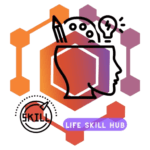Table of Contents
ToggleWhat is WordPress?
WordPress is a popular content management system (CMS) that allows users to create and manage websites easily. It’s an open-source platform known for its flexibility, user-friendly interface, and extensive plugin ecosystem.
Understanding WordPress and Its Functioning:
- CMS Structure: WordPress separates content from design, allowing easy management and updates.
- Themes: Control the website’s appearance.
- Plugins: Extend functionality without coding.
- Dashboard: Central hub for site management.
Features of WordPress:
- User-Friendly Interface: Easy for beginners to navigate and use.
- Themes and Templates: Customizable design options.
- Plugins: Add features and functionality.
- SEO-Friendly: Built-in tools for search engine optimization.
- Community Support: Large and active user community.
Advantages and Disadvantages of WordPress:
Advantages:
- Ease of Use: User-friendly interface.
- Customization: Wide range of themes and plugins.
- SEO-Friendly: Built-in tools for optimization.
- Community Support: Active user community.
Disadvantages:
- Security Concerns: Vulnerable to attacks if not properly maintained.
- Customization Limitations: Some complex designs may require coding.
- Performance Issues: Heavy reliance on plugins can impact speed.
WordPress.com vs WordPress.org:
- WordPress.com: Hosted platform with limited customization options.
- WordPress.org: Self-hosted platform with full control over customization and plugins.
Sites Built with WordPress:
- Blogs: Many blogs use WordPress.
- Business Websites: Small businesses and large enterprises.
- E-commerce Sites: WooCommerce integrates seamlessly.
- Portfolio Websites: Showcasing creative work.
- News Websites: Media outlets often use WordPress.
How to Install WordPress?
- Choose a Domain and Hosting Provider.
- Install WordPress:
- Many hosting providers offer one-click installations.
- Alternatively, download from WordPress.org and follow installation steps.
Editing the Page and Changing the Site Title:
- Go to the Dashboard.
- Navigate to Pages > All Pages.
- Select the Page to Edit.
- Make Changes in the Editor.
- To Change Site Title: Go to Settings > General.
Add and Edit a Menu:
- Go to Appearance > Menus.
- Create a New Menu.
- Add Pages, Posts, or Custom Links.
- Assign Menu to a Location (e.g., Header).
Blog Page Design:
- Create a New Page for Blog.
- Go to Settings > Reading.
- Set the Blog Page.
- Customize Blog Page Layout.
Adding a Video to Your Website:
- Upload Video to Media Library.
- Edit or Create a Post/Page.
- Insert Video Block.
- Paste Video URL or Embed Code.
Add Social Sharing Buttons:
- Use Plugins: Many social sharing plugins available.
- Configure Plugin Settings.
- Add Buttons to Posts/Pages.
Working with Dashboard:
- Dashboard Overview: Quick access to key features.
- At a Glance: Site status summary.
- Quick Drafts: Create drafts directly from the dashboard.
- Activity: Recent site activity.
What are Plugins and Their Uses?
- Plugins: Extend functionality without coding.
- Uses: SEO optimization, security, e-commerce, social sharing, and more.
- Install Plugins: Go to Plugins > Add New.
What is the Widget and How to Use It:
- Widgets: Small blocks that perform specific functions.
- Add Widgets: Go to Appearance > Widgets.
- Drag and Drop Widgets to Sidebar or Widget Areas.
Creation of Pages and Menus:
- Create Pages: Pages > Add New.
- Create Menus: Appearance > Menus.
- Add Pages to Menus: Drag and drop from the left panel.
The Importance of the Homepage:
- First Impression: Sets the tone for the site.
- Clear Navigation: Easy access to key sections.
- Engaging Content: Captures visitor interest.
Terms, Privacy, and Disclaimers:
- Legal Documents: Important for legal compliance.
- Create Pages: Pages > Add New.
- Templates Available: Many templates online.
Difference Between Posts and Pages:
- Posts: Time-sensitive content, typically used for blogs.
- Pages: Static, timeless content like About Us or Contact.
Integrating Google Analytics:
- Create a Google Analytics Account.
- Get Tracking Code.
- Install Code on WordPress: Use a plugin or insert code manually.
Adding a Site to Webmaster Tools:
- Google Search Console: Verify site ownership.
- Bing Webmaster Tools: Similar process.
- Submit Sitemap: Helps search engines understand site structure.
WordPress is a versatile platform, and these steps cover essential aspects of creating and managing a WordPress website. If you have specific questions or need further guidance on any topic, feel free to ask!
